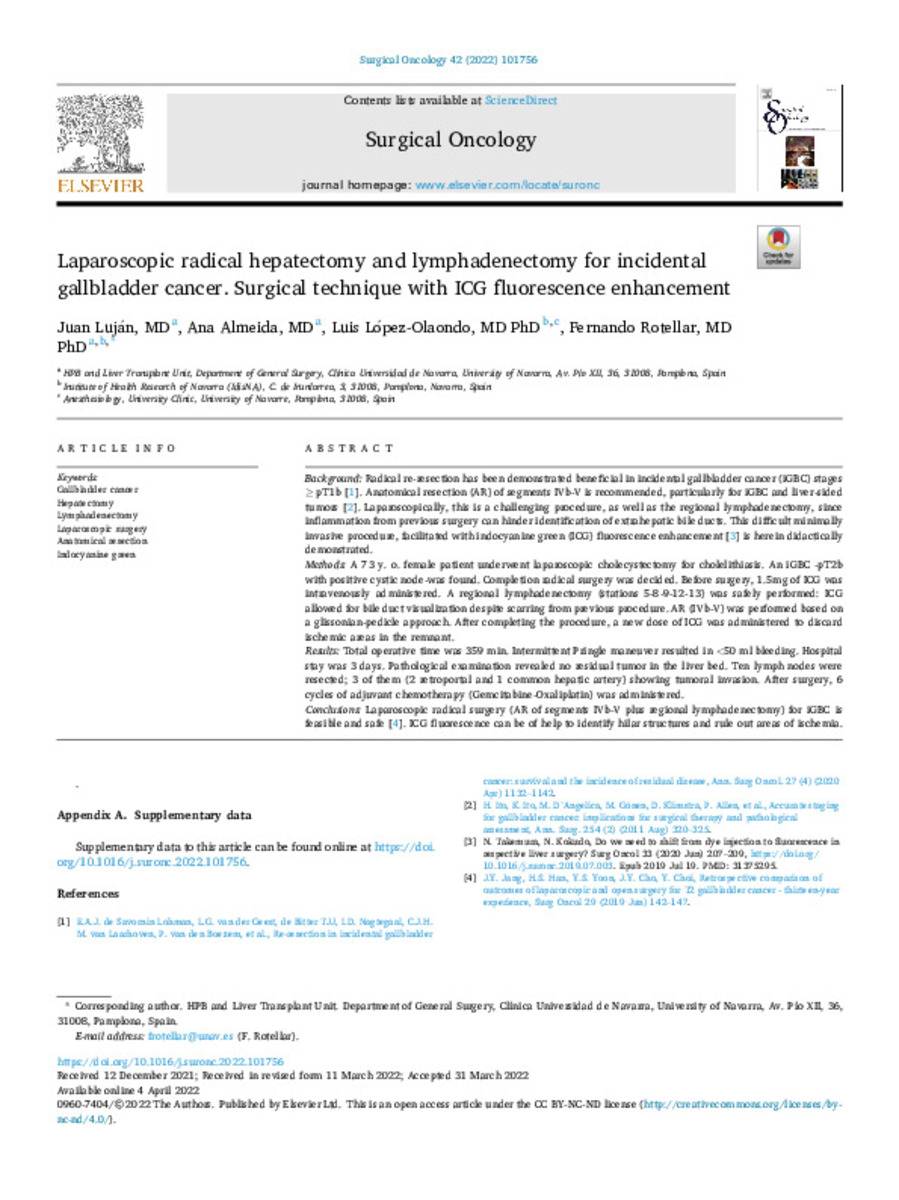Laparoscopic radical hepatectomy and lymphadenectomy for incidental gallbladder cancer. Surgical technique with ICG fluorescence enhancement
Palabras clave :
Gallbladder cancer
Hepatectomy
Lymphadenectomy
Laparoscopic surgery
Anatomical resection
Indocyanine green
Fecha de publicación :
2022
Nota:
This is an open access article under the CC BY-NC-ND license
Cita:
Lujan, J.A. (J.A.); Fusco-Almeida, A.M. (Ana Marisa); Lopez-Olaondo, L. (Luis); et al. "Laparoscopic radical hepatectomy and lymphadenectomy for incidental gallbladder cancer. Surgical technique with ICG fluorescence enhancement". Surgical Oncology. (42), 2022, 101756
Aparece en las colecciones:
Estadísticas e impacto
0 citas en

Los ítems de Dadun están protegidos por copyright, con todos los derechos reservados, a menos que se indique lo contrario.







